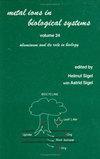Biogeochemistry and cycling of lead.
引用次数: 100
Abstract
Lead has no biological function and is one of the most toxic metals. At the same time, it is one of the most useful, and perhaps no other metal has found such a wide range of industrial applications. It has been used extensively since Antiquity, which is when environmental Pb contamination began. With respect to contamination since industrialization, peat bogs and polar ice show that coal combustion and industrial emissions were as important during the first half of the 20th century as gasoline lead was during the second half. Air Pb concentrations have generally declined since the introduction of pollution control technologies and the gradual elimination of leaded gasoline additives. However, all of the most recent published studies of the isotopic composition of Pb in aerosols and archival samples show that anthropogenic sources continue to dominate the atmospheric Pb flux by a considerable margin. The health effects of childhood Pb exposure is a growing concern, as deleterious effects are seen at BLL well below those currently believed to be safe, and safe levels are one or two orders of magnitude above the estimated natural values. Mobilization of Pb-rich particles from highly contaminated soils in urban areas is an on-going health concern for many large cities. Even in areas far removed from industrial emission sources, Pb concentrations in the surface soil layers are far above their natural concentration range. In acidic forest soils, Pb concentrations are not only elevated in the biologically active zone, but also in their corresponding pore fluids. Accurate and precise measurements of the isotopic composition of Pb employing appropriate clean lab protocols, will continue to advance our understanding of the fate of Pb in the environment and its impact on human and ecosystem health.铅的生物地球化学与循环。
铅没有生物功能,是毒性最大的金属之一。同时,它是最有用的金属之一,也许没有其他金属有如此广泛的工业应用。它从古代就被广泛使用,这是环境铅污染开始的时候。就工业化以来的污染而言,泥炭沼泽和极地冰表明,煤炭燃烧和工业排放在20世纪上半叶的重要性不亚于汽油铅在20世纪后半叶的重要性。自引入污染控制技术和逐步消除含铅汽油添加剂以来,空气铅浓度普遍下降。然而,所有最近发表的关于气溶胶中铅同位素组成的研究和档案样本都表明,人为来源继续以相当大的幅度主导大气铅通量。儿童接触铅对健康的影响日益受到关注,因为在BLL中看到的有害影响远低于目前认为的安全水平,而安全水平比估计的自然值高一两个数量级。从城市地区高度污染的土壤中动员富铅颗粒是许多大城市持续关注的健康问题。即使在远离工业排放源的地区,表层土壤中的铅浓度也远高于其自然浓度范围。在酸性森林土壤中,铅浓度不仅在生物活性区升高,而且在其相应的孔隙流体中也升高。采用适当的洁净实验室方案对铅的同位素组成进行准确和精确的测量,将继续促进我们对铅在环境中的命运及其对人类和生态系统健康的影响的理解。
本文章由计算机程序翻译,如有差异,请以英文原文为准。
求助全文
约1分钟内获得全文
求助全文

 求助内容:
求助内容: 应助结果提醒方式:
应助结果提醒方式:


